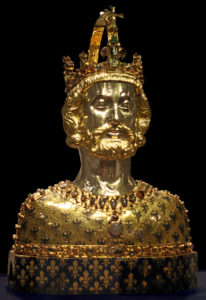
The Hêliand represents a towering yet puzzling work of early continental Germanic literature whose deliberate fusion of Christian ideas with the language of warrior elites creates a rich and intense patchwork for audiences. Composed in the first half of the ninth century in the Carolingian Empire at a time when the emperors sought to impose Christianity on their newly conquered Saxon subjects, the text consists of a lengthy verse Gospel paraphrase completed in the so-called Old Saxon dialect—a predecessor of Middle and High varieties of Low German spoken throughout the northern regions of contemporary Germany. The religious subject of the poem is translated into the language of a Germanic warrior culture in order to reach a wide audience of lay—especially male—elites. This, in turn, transforms the narrative of Jesus’ life into a uniquely Christian-Germanic epic propped up by the language of fidelity and war.

One of the moments in the Hêliand where the juxtaposition of Christian ideas and prophecy with a Germanic vocabulary of warrior elites comes in the work’s fifty-sixth fitt (“song”), the Last Supper narrative. Linked is an excerpt and translation from this turning point in the text (Hêliand 56, lines 4665-4701), revolving around Simon Peter’s reaction to Jesus’ forecasting of the former’s impending betrayal (which I have titled “Peter’s Promise”). Throughout his speeches, Jesus relies upon the vocabulary of fidelity and lordship, while Peter’s promise to sacrifice himself “an uuapno spil”—literally “in the play of weapons”—reads as a transparent euphemism for the scourges of battle.
Jake Coen
PhD Candidate in Medieval Studies
University of Notre Dame
